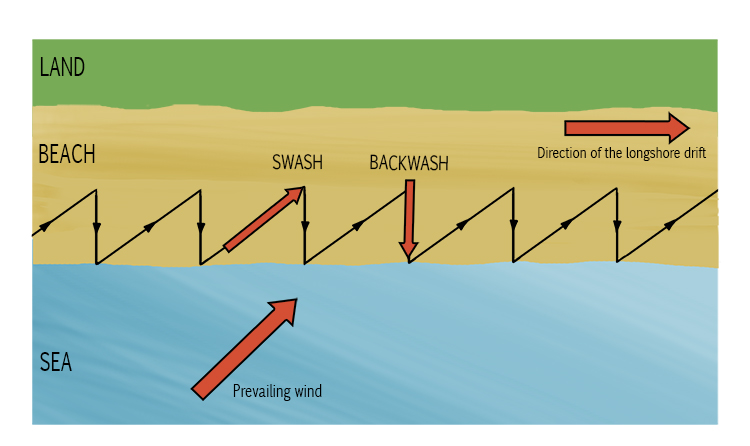Longshore drift – The zigzag movement of sand and pebbles along a shore caused by waves going up the beach at an oblique angle (swash) and returning at right angles (backwash). This results in the gradual movement of beach materials along the coast
To remember the meaning of the term Transportation, use the following mnemonic:
Along the shore, sand and pebbles drift (Longshore drift) in at one angle and out at another.

The best way to remember longshore drift is to study the diagram above. The prevailing wind (the direction it usually blows from) causes waves to approach the coast at an angle. The swash carries the sand and pebbles up the beach at the same angle.
The backwash, however, carries the material back down the beach at right angles as this is the steepest gradient.
If you dropped a pebble in the water at one end of the beach, it could zigzag all the way along to the other end.
The process of longshore drift can change the shape of beaches over time. Groynes can be constructed to stop the flow of longshore drift, but some sand and gravel still escapes. Where the line of the coast changes, longshore drift can form spits, for example at the mouth of a river.




